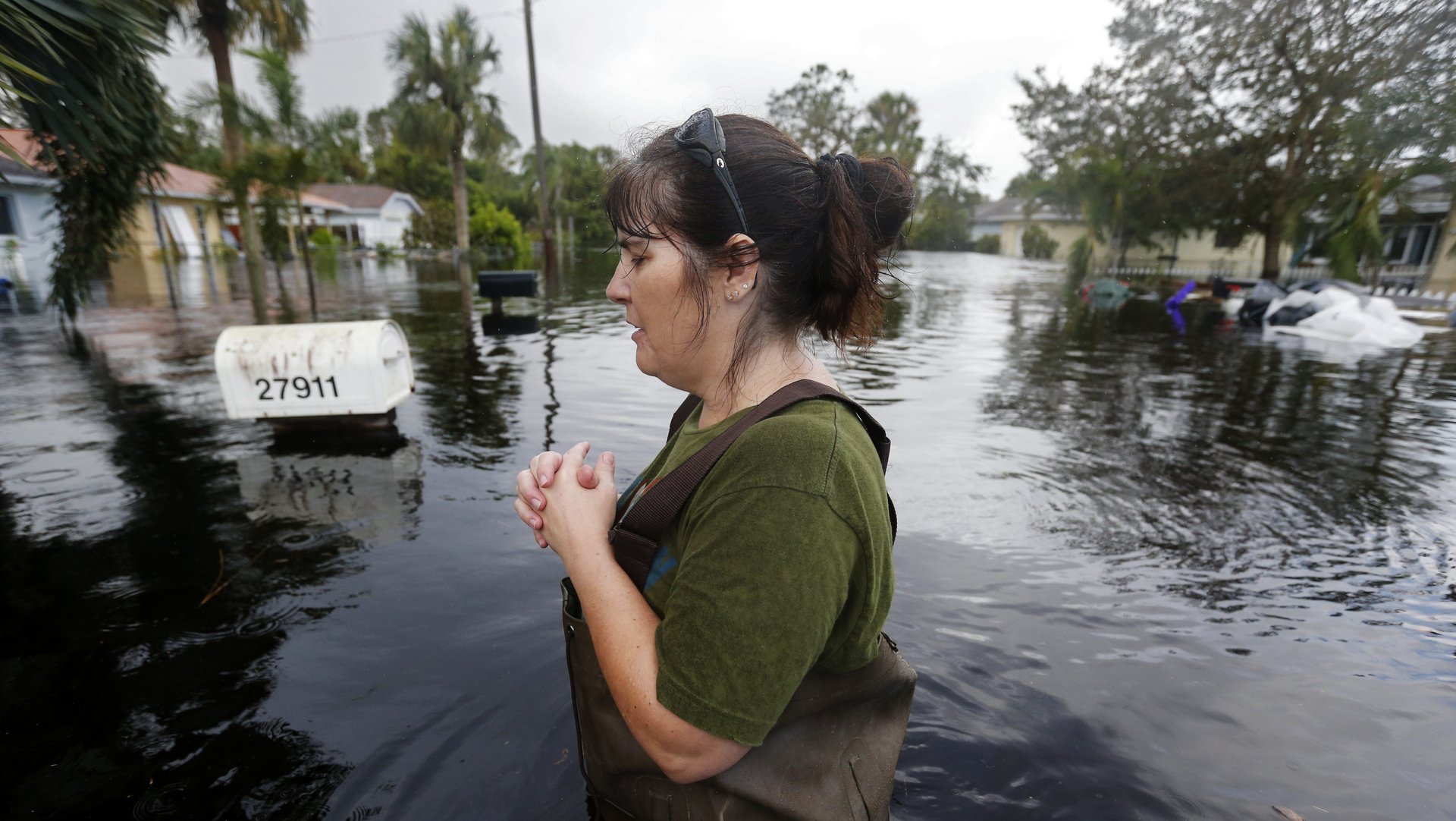Millions of homeowners aren’t insured for the damage done by Irma
As Irma continued its destructive path across the southeastern US on Monday (Sept. 11.), it seemed increasingly likely that damages will reach into the many billions of dollars.


As Irma continued its destructive path across the southeastern US on Monday (Sept. 11.), it seemed increasingly likely that damages will reach into the many billions of dollars.
The storm, which started out as the largest recorded hurricane in the Atlantic, turned out to be less brutal than expected once it made landfall Sunday. But the destruction will be widespread. For perspective, consider Andrew, the 1992 hurricane that devastated the area southwest of Miami. Irma is not as intense, but its effects are spread over practically the entire state, says Phil Klotzbach, a research scientist at Colorado State University who studies hurricanes. He describes it as “getting hit by a car instead of getting hit by a truck.”
Who will pay for all that damage? In many cases, it will be homeowners, and they will be doing it largely out-of-pocket—if they have any money in their pockets, that is. Though sea-level rise has arguably increased the risk of flooding in Florida in recent years, the rate of flood insurance has fallen, according to an AP analysis. That decline is partly due to changes in government policy, including increases in the prices of policies and redrawn flood-plain maps that left out vulnerable areas, thus lifting the requirement for residents there to buy insurance. Many homeowners have also let their policies expire, the AP notes. In Florida’s coastal counties alone, which are most likely to have suffered damages from Irma, there are around 1.45 million unprotected houses.
Irma largely bypassed the Miami area, the biggest population center in the state, but it pounded a string of cities on Florida’s southwest coast, some of them extremely vulnerable to storm surges. They include Naples, near where Irma entered the mainland, and Cape Coral. Jacksonville, on the state’s east coast, was also hammered with record flooding. Taken together, the number of vulnerable homes in those three cities is about the same as in Miami, according to a report by data firm CoreLogic.
The same holds true if you add up the cost to repair those homes, were they to be completely ruined: $141 billion for the three cities, versus $143 billion for Miami.
To be sure, the CoreLogic numbers represent a worst-case scenario; the situation will almost certainly be less dire. (Weather forecaster AccuWeather, for example, put the damage from Irma at $100 billion.) Still, that’s little consolation for residents whose homes have been trashed.
The uninsured among them might be eligible for some federal help, but shouldn’t get their hopes up. The government sets aside millions of dollars—and in the case of 2012 Superstorm Sandy, more than a billion dollars—to help those who have lost everything in a natural disaster, but those funds don’t stretch very far. The maximum amount a homeowner can get under the Federal Emergency Management Agency’s individual assistance program is $33,000, though previous hurricanes have shown that what’s given out is often much less. Victims of Sandy, for example, received about $8,000 on average, according to an analysis by The Advocate, a newspaper out of Baton Rouge, Louisiana. Katrina survivors received a little over $7,000 on average. The payouts for Gustav (2008), Rita (2005), and Ivan (2004) were $3,000 or less.
“FEMA was never designed to supplant insurance,” the agency’s former director Craig Fugate told NPR.
If that’s the case, both the government and homeowners will have to reevaluate insurance requirements in the wake of Irma and Harvey, which hit an area with even lower rates of flood insurance than Florida.